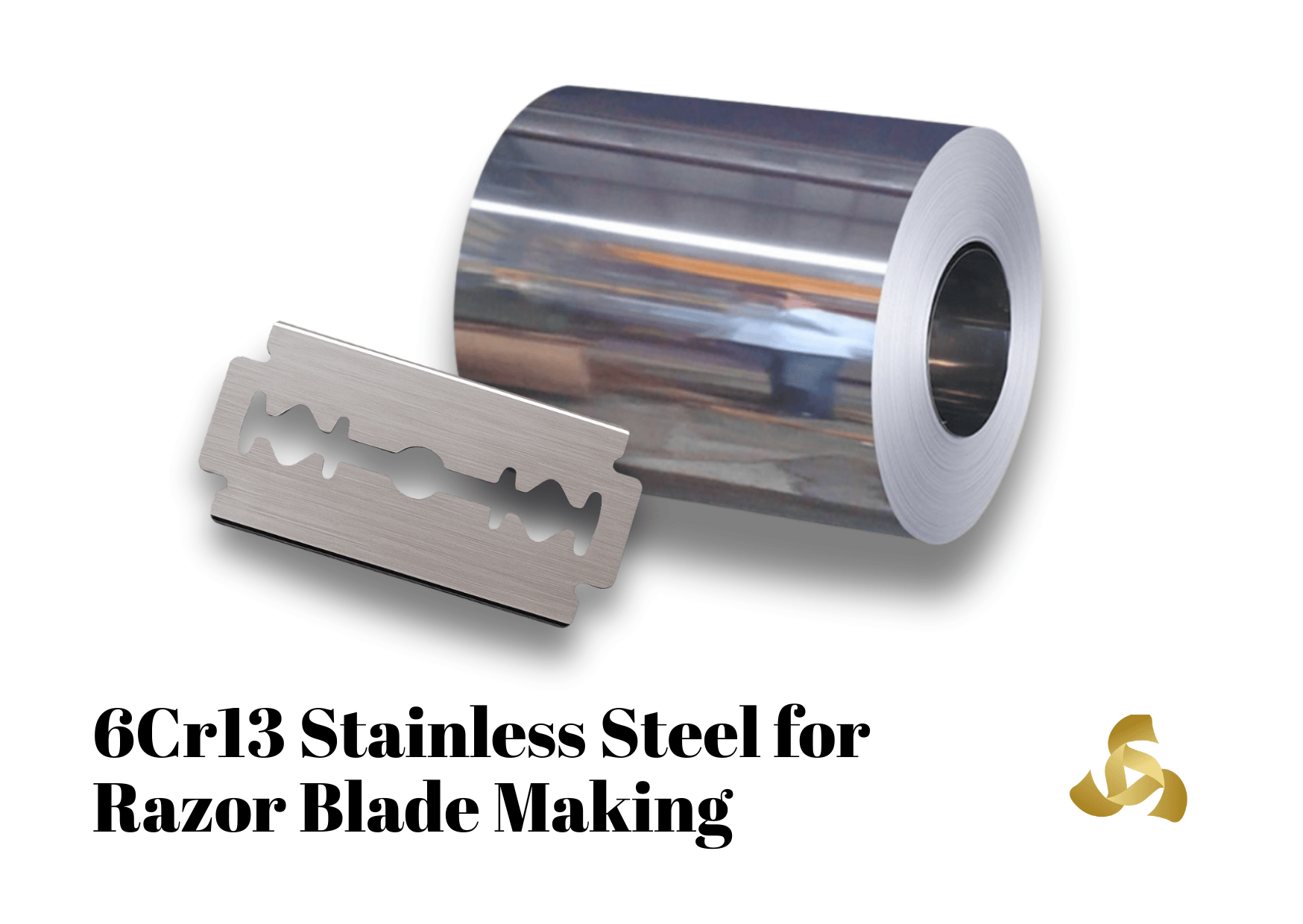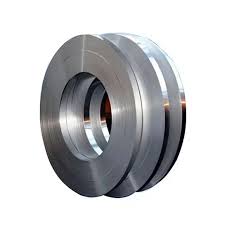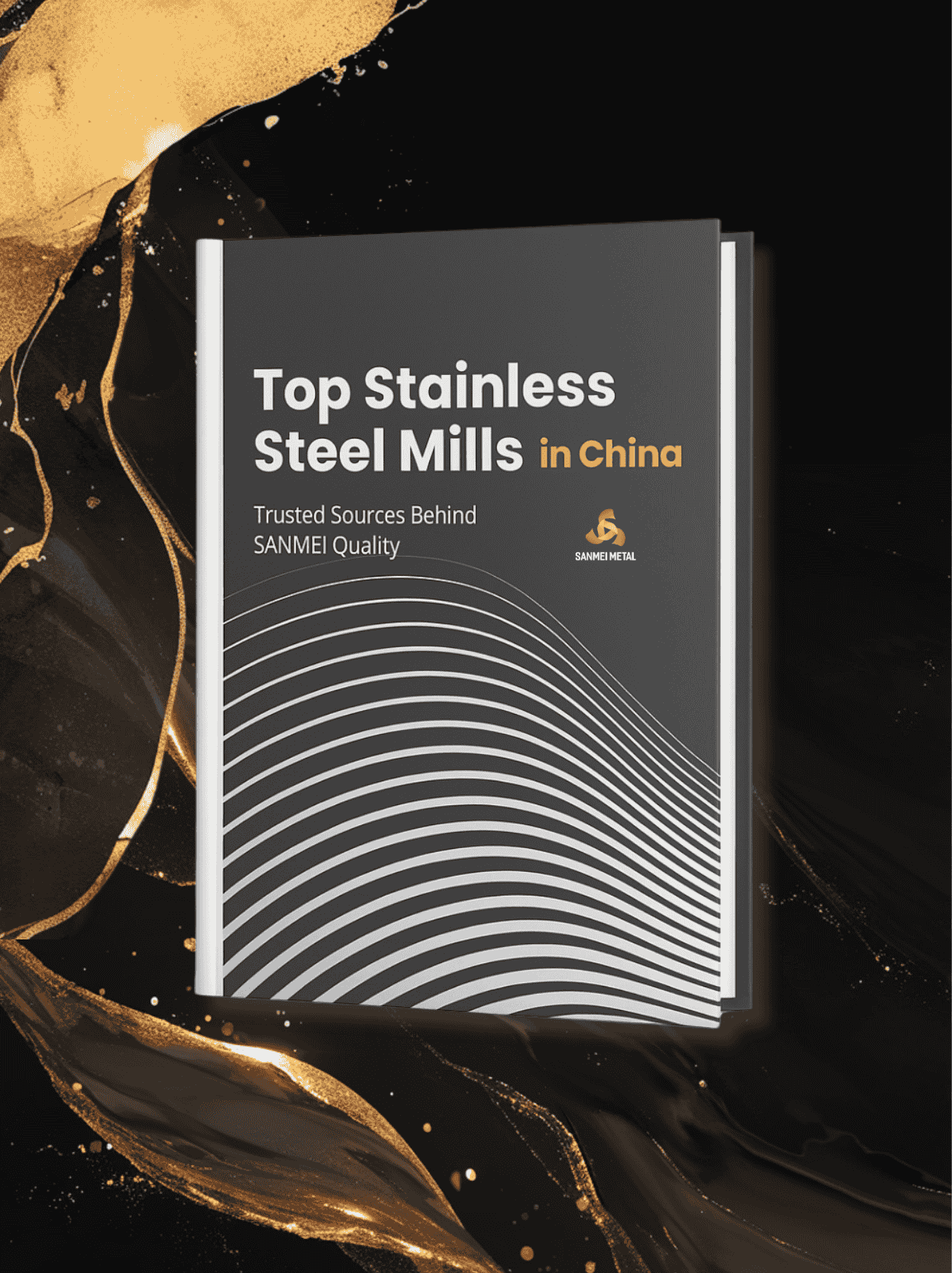5 Gründe, warum Hersteller von Rasierklingenstahl auf 6Cr13 vertrauen
In der Welt der Klingenherstellung ist die Wahl von Rasierklingenstahl wirkt sich nicht nur direkt auf die Leistung aus, sondern auch auf die Kosteneffizienz, Haltbarkeit und Benutzerzufriedenheit. Während verschiedene Stahlsorten – darunter Kohlenstoffstahl, legierter Stahl und Werkzeugstahl – in Schneidwerkzeugen verwendet werden, Rasierklingenmaterial müssen einen höheren Standard erfüllen: Schärfe, Korrosionsbeständigkeit und gleichbleibende Schnitthaltigkeit unter nassen Einsatzbedingungen.
Unter allen Optionen 6Cr13 martensitischer Edelstahl ist die erste Wahl der Branche. Aber was genau macht ihn so zuverlässig – und wie schneidet er im Vergleich zu anderen Stahlsorten in der Praxis beim Rasieren ab? Lassen Sie uns die fünf Hauptgründe dafür aufschlüsseln.
1. Es entspricht der offiziellen Definition von Rasierklingenstahl
Vor der Auswahl eines Materials müssen Hersteller sicherstellen, dass es den globalen Definitionen für die Anwendung von Rasierklingen entspricht. Laut der Internationale Handelskommission der Vereinigten Staaten, Rasierklingenstahl wird nicht nur durch seine Zusammensetzung, sondern auch durch seine Form definiert – flachgewalzte Spulen mit einer Breite von weniger als 23 mm und einer Dicke von 0,266 mm.
6Cr13 erfüllt genau diese Kriterien:
Chromgehalt zwischen 12%–14,5%
Kohlenstoffgehalt ca. 0,60%
Martensitische Struktur, die aushärtet und so eine feine Kantenschärfe liefert
Dies ermöglicht eine präzise, leistungsstarke Klingengeometrie bei gleichzeitiger Wahrung der Haltbarkeit und Verschleißfestigkeit.

2. Es bietet die beste Balance unter den rostfreien Klingenmaterialien
Doch die Konformität ist nicht alles – die wahre Leistung hängt davon ab, wie gut sich ein Material im praktischen Einsatz bewährt. Rasierklingen aus Edelstahl zeichnen sich durch ihre Widerstandsfähigkeit gegen Feuchtigkeit und Oxidation aus und sind daher ideal für Rasierer, die mit Wasser in Berührung kommen.
Im Vergleich zu Kohlenstoffstahl bietet 6Cr13 eine optimale Mischung aus:
Hohe Korrosionsbeständigkeit bei feuchten oder nassen Bedingungen
Härte bis zu ~58 HRC nach Wärmebehandlung
Verarbeitbarkeit in Kaltwalz-Dünnband-Produktionsprozessen
Diese Eigenschaften tragen dazu bei, Beschwerden der Benutzer über Rost, häufigen Austausch oder vorzeitige Stumpfheit zu reduzieren.
Eine umfassendere Perspektive auf die Vorteile martensitischer Edelstähle in Nassanwendungen finden Sie unter Alleimas technischer Bericht.
3. Es entspricht den tatsächlichen Wünschen der Benutzer
Das Verständnis der Materialeigenschaften ist wichtig – aber ebenso wichtig ist es, den Menschen zuzuhören, die das Produkt verwenden. In einem Reddit-Thread aus der Rasier-Community, Die Benutzer hatten große Vorlieben hinsichtlich Gewicht, Rostbeständigkeit und Haptik.
Dieses informelle, aber aufschlussreiche Feedback bestätigt, was Fachleute bereits wissen:
| Material | Wahrgenommener Wert | Haltbarkeit | Benutzergefühl | Markteinblick |
|---|---|---|---|---|
| Edelstahl | Hoch | Lebenslang+ | Solide, zuverlässig | Der „Rasierer für die Ewigkeit“; bevorzugt wegen seiner Korrosionsbeständigkeit |
| Titan | Prämie | Lebenslang+ | Leicht, warm | Bequem, aber für manche Benutzer zu schwer |
| Messing / Bronze | Traditionell | Jahrhundert+ | Schwer, klassisch | Vintage-Look, entwickelt Patina |
| Aluminium | Mäßig | Beschränkt | Ultraleicht | Reisefreundlich, weniger langlebig |
| Zamak | Niedrig | Kurz | Licht | Einstiegsklasse, anfällig für Korrosion bei versagender Beschichtung |
Verbraucher priorisieren konsequent Schärfe, Kantenlebensdauer, Und Rostbeständigkeit– genau die Stärken von 6Cr13.
4. Es übertrifft ähnliche Rasierklingenstähle
Neben dem Feedback der Anwender und den Laborergebnissen müssen Hersteller auch intelligente Entscheidungen auf der Grundlage vergleichender Materialwissenschaften treffen. Innerhalb der CR-Reihe martensitischer Edelstähle bietet 6Cr13 die beste Balance zwischen Härte, Festigkeit und Korrosionsbeständigkeit.
Die folgende Tabelle vergleicht es mit 4Cr13 und 3Cr13, die bei Klingen der mittleren oder unteren Preisklasse üblich sind. Referenz: Xirui Blades Analyse.
| Grad | Kohlenstoff % | Härtepotential | Stärken | Einschränkungen | Typische Verwendung |
|---|---|---|---|---|---|
| 6Cr13 | 0.60% | ★★★★☆ | Hohe Härte, Korrosionsbeständigkeit, Ausgewogenheit | Mäßige Schnitthaltigkeit bei wiederholter Belastung | Hochleistungsklingen (Rasierer, Scheren) |
| 4Cr13 | 0.40% | ★★★☆☆ | Einfachere Verarbeitung, gute Widerstandsfähigkeit | Geringere Härte, nicht ideal für Präzisionsklingen | Mittelklasse-Pflegewerkzeuge |
| 3Cr13 | 0.30% | ★★☆☆☆ | Kostengünstig, leicht zu formen | Weich, nutzt sich schneller ab | Einsteiger- oder Dekoklingen |
Eine Nuance: Obwohl 6Cr13 nicht der härteste oder exotischste Stahl auf dem Markt ist (z. B. im Vergleich zu pulvermetallurgischen Stählen), ist er speziell für Nassrasierer optimiert. Für anspruchsvolle Anwendungen jenseits der Rasur – wie Industrieklingen oder chirurgische Instrumente – kommen andere Stähle in Frage. Für Rasierapparate ist er jedoch kaum zu übertreffen.
5. Es ist bewährt, verfügbar und skalierbar – unterstützt von Sanmei Metal
Natürlich ist die Auswahl der richtigen Rasierklingenmaterial bedeutet nichts, wenn Sie es nicht zuverlässig beschaffen oder für die Produktion skalieren können. Hier kommt Sanmei Metal ins Spiel.
Wir liefern 6Cr13 Edelstahl in präzisen Flachbandstreifen – speziell für Rasierklingenanwendungen entwickelt. Dank unserer internen Kapazitäten bieten wir:
📏 Enge Maßtoleranzen
🔬 Kundenspezifische Oberflächenausführungen (BA, 2B, Spiegel)
🧪 Konsistente mechanische Eigenschaften, Charge für Charge
🛠️ F&E-Unterstützung für die Optimierung der Klingenkanten
🔄 Flexible Mengen: von Testchargen bis zur Serienproduktion
6Cr13 Edelstahl

Reden wir über Rasierklingenstahl
Benötigen Sie eine hohe Härte, korrosionsbeständig Rasierklingenmaterial das in allen Fertigungslinien und Märkten Leistung bringt?
Auf der Suche nach einem Lieferanten, der sich mit Metallurgie auskennt Und die Rasierindustrie?
Kontakt Sanmei Metal Fordern Sie noch heute Muster, technische Daten oder eine Anwendungsberatung an.









[…] bietet hervorragenden Schutz vor Rost und verlängert die Lebensdauer der Klinge. Die martensitische Struktur des 6Cr13-Stahls garantiert eine feine […]